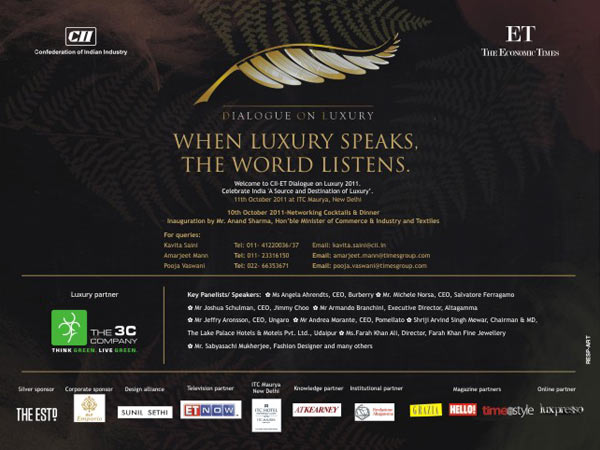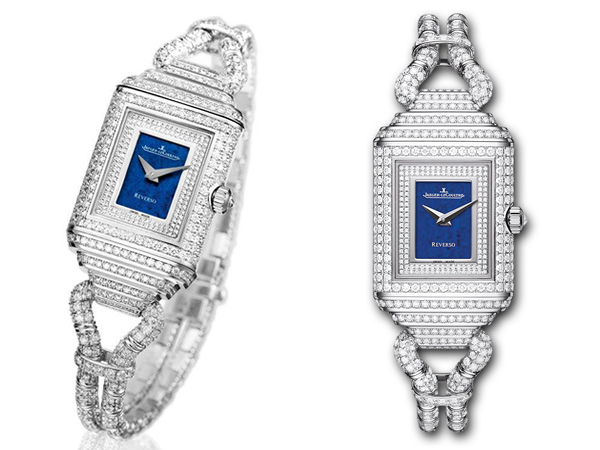India is becoming increasingly important in the luxury circuit. The country’s status as an emerging economy has excited luxury brands from around the world. Industry watchers believe that a China-like growth story is possible in India. The country has huge potential to become the next big chapter in the luxury story.
This was why the Confederation of Indian Industry (CII) tied up with the Economic Times (ET) to organize The CII-ET Dialogue on Luxury 2011. Already in its second edition, this annual luxury conference seeks to highlight the luxury industry in India – its possibilities, challenges and more. The CII luxury conference features several high-profile personalities of Indian industry. This year, Minister of Commerce and Industry Anand Sharma was among the key speakers at the event.
Easing The Hurdles
Sharma highlighted the need to welcome more luxury brands into India. The Minister of Commerce promised to open up the market to enable international brands to enjoy greater profits. As things stand, global luxury brands do not feel entirely welcome in India. There are several things standing in the way of international investment. This is despite the huge number of affluent Indians who would form a strong market for international luxury goods.
Tax barriers are one of the big hurdles facing global luxury brands. Import taxes on luxury goods are a whopping 30 to 40 percent. As if that were not enough, there is a 51 percent limit on foreign ownership of Indian units of the brands. The high taxes raise prices of luxury goods considerably, making high-end goods almost unaffordable. In the past, it has encouraged Indians to purchase luxury goods during trips abroad. The 51 percent cap works as another barrier. Foreign brands are unhappy about sharing such a huge proportion of ownership with outsiders. They feel that this could adversely impact their brand name and business models.
Due to the presence of such hurdles, international brands have been wary about entering the Indian market. In many cases, their entries have been no more than a branding exercise. However, the commerce minister has hinted at an opening up of the Indian market. He has announced the ministry’s intentions to create “an enabling environment, a welcoming market”.
There have been reports that the Indian government is considering raising the 51 percent cap on foreign direct investment. At present, single-brand luxury retailers like Gucci and Hermes, as well as more mainstream ones like Adidas and Nike, operate in India under the 51 percent FDI cap.
Commerce minister Anand Sharma did not reveal by how much the cap would be raised, however. Things will become clearer in December 2011, when the next round of trade talks between India and Europe are held.
Emerging Trends
The CII-AT Kearney report that released this Tuesday featured some interesting finds. According to the report, the luxury bug has not bitten big cities alone. One in four luxury stores are established outside Mumbai, Delhi and Bangalore. This could very well be the trend for the next few years, what with the Indian luxury market growing at over 20 percent per annum. According to statistics, the luxury market here will be worth an estimated $5.8 billion by end-2011. The CII-AT Kearney report also revealed that despite the high tariffs, the prices here are on par with those of Singapore, making domestic luxury purchases more practical.
There is excitement in international luxury circles. Burberry CEO Angela Arhendts has described India as one of Burberry’s “fastest growing markets”. Arhendts has been very dedicated to fuelling the Asia story over the years. She is one of the first luxury professionals to realize the potential of these emerging markets. Even Jimmy Choo, which does not have quite the reach of a Burberry yet, is eager to exploit the Indian markets. Chief executive Joshua Schulman said in a recent report, “India is critical to growth as wealth is drifting towards this region.”
Why is India so important? The reason lies in the sheer number of affluent Indians. A global affluence study by research group TNS has established that India is home to 3 million affluent households. These are homes with disposable incomes of $100,000 (Rs 50 lakh) and above. As if that were not enough, Swiss wealth manager Julius Baer predicts that the wealth of high net worth individuals in India (that is people with assets of $1 million and above) will more than double by 2015.
Many of these individuals are young. There is also a lot of new money. But one of the challenges is that affluent Indians may not be well acquainted with luxury brands. As international brands make inroads into India, they will have to work on new marketing strategies to spread awareness about their products and services. Understanding the Indian consumer and playing to his/her interests will hold the key to success in the Indian luxury market.
Good News For The Industry
The above-mentioned CII-AT Kearney report revealed that the Indian luxury market has much to celebrate. In addition to the overall growth estimates, the report stated that luxury goods have grown the fastest, posting growth rates of 29 percent as opposed to the more modest initial estimates of 23 percent. Apparel, accessories and wines have posted strong growth. But the biggest movers have been jewelry, electronics, cars and fine dining. However, luxury real estate prices have remained flat. And the luxury yacht boom, which is being seen in China, is yet to hit India because of marine infrastructure limitations.
In a recent interview, Shriji Arvind Singh Mewar of the HRH Group of Hotels said, “Luxury products and services in India are reflecting the aspirations and needs of our global citizens….” The hospitality veteran recognized that although luxury hospitality is currently limited to the big cities, it should spread to the smaller cities and towns in the next few years.
Clearly, the role of the smaller cities and towns is uppermost on the minds of luxury players. The big cities will always be the first port of call. But for international brands that are serious about extending their reach to the richest Indians, there is a need to move business to places that are not as high-profile. And if the Indian market becomes more welcoming to international luxury brands, a China-like luxury growth story may not be far away.



